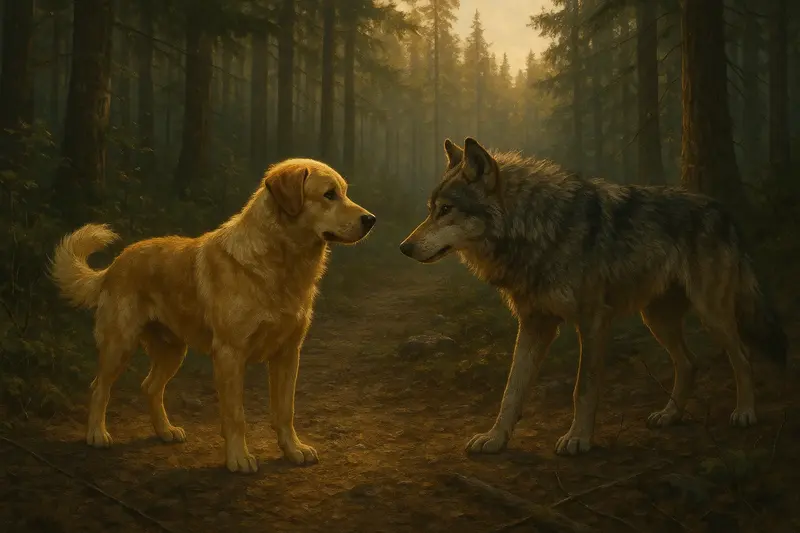In everyday conversation, we often hear that "dogs are domesticated wolves." This is not merely an analogy but a statement backed by solid zoological and genetic evidence. This article explores the evolutionary link between dogs and wolves, from their shared ancestry to the process of domestication, highlighting the scientific rationale that supports this claim.

Both dogs and wolves belong to the kingdom Animalia, class Mammalia, order Carnivora, family Canidae, and genus Canis. The domestic dog is scientifically named Canis lupus familiaris, while the gray wolf is Canis lupus. This classification clearly indicates that dogs are a subspecies of wolves.
Genetic sequencing reveals that dogs and wolves share 99.9% of their DNA, which strongly supports the claim of their close evolutionary relationship. This similarity is not only morphological but also genetic, confirming their common ancestry.
Around 20,000 years ago, certain wild wolves began associating with early human societies. These wolves benefited from leftover food, protection, and other survival advantages. Over generations, humans selectively bred wolves with docile traits, gradually giving rise to the first domestic dogs.
As humans migrated and developed agriculture, dogs were bred for specific roles like hunting, guarding, and herding. Selective breeding led to the diverse range of dog breeds we see today, each adapted to different environments and tasks.
Wolves typically have leaner bodies, erect ears, and bushy tails. Dogs, on the other hand, exhibit diverse physical traits like curled tails, droopy ears, and varying coat lengths, depending on the breed.
Wolves are highly social animals with synchronized pack behavior. Dogs, having adapted to living with humans, display stronger social bonds with humans, enhanced learning abilities, and are generally more docile and trainable.
Current research suggests that dogs may not have originated from a single wolf population but rather from multiple domestication events in different regions. This "multiple origin" hypothesis adds complexity to the traditional view of dog domestication.
Tools and fossils found in various parts of the world indicate that humans and dogs have coexisted for over 10,000 years. This long-term relationship suggests a gradual, rather than abrupt, domestication process.
Dogs are indeed the descendants of wolves, shaped over millennia through natural evolution and human intervention. They transitioned from wild predators to affectionate companions and versatile helpers. This domestication journey is one of the earliest and most successful examples of human-animal interaction in history, showcasing our deep and enduring bond with dogs.
animal tags:
We created this article in conjunction with AI technology, then made sure it was fact-checked and edited by a Animals Top editor.